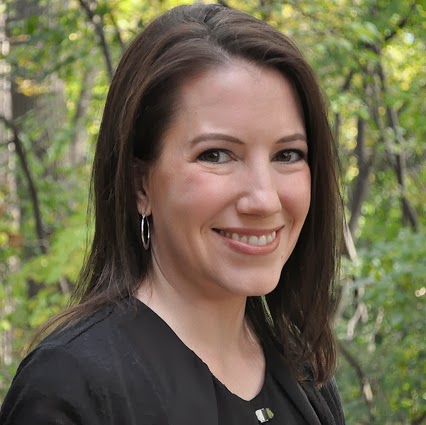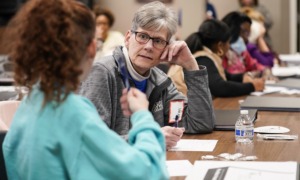Volunteer coordinators are often told to develop an elevator speech to use in their efforts to recruit volunteers. An elevator speech is a brief description of the program you can share in the time it takes you to go up a few floors on a elevator.
While these speeches have their place, they are rarely useful in recruiting a new volunteer. Why not? Every person has different interests and motivations, and when we use the same approach with every person, we are not likely to share the right information to recruit the potential volunteer.
Targeted volunteer recruitment is a process of:
- Selecting an audience that is likely to succeed in the volunteer role.
- Tailoring a message to this audience.
- Asking them to volunteer.
The first step involves making a list of your ideal volunteer qualities, skills and characteristics. Who do you need to do this job? Perhaps you are looking for someone with good communication skills, reliability and the ability to volunteer during the traditional workday.
The next step is to think of places where people who meet this description may congregate. Retirees, college students with a major related to your organization and stay-at-home parents of school-aged children are a few groups that might work in this example. At this point, a volunteer coordinator might contact retiree groups, college professors or advisors and parent networks to inquire about opportunities to speak to the target audience. Another approach would be to create social media posts tailored to this audience.

Lisa Bottomley
If you schedule a presentation, it is important to learn about the group you will visit. Look at web pages and social media to learn who they are and what they care about. Ask your contact to tell you about the group and their interests. When all this information has been gathered, it is time to design your presentation. Your presentation should consider the unique audience.
If you are not able to get in front of a group for a presentation, you can still target your message. Consider speaking to your desired audience through your social media posts. Rather than vague posts that suggest anyone can volunteer, be specific about who you are looking for. Use pictures and words that speak to the interests of those who are most likely to be successful in this role. You can also ask other groups to share your recruitment posts. You can ask directly or consider using tags and hashtags to increase your visibility.
Michigan State University Extension suggests using these questions as a guide in planning and communicating your volunteer opportunity:
- Why this audience? What makes them uniquely qualified for the volunteer position?
- What are the benefits this audience will likely care about?
- Why is this volunteer work important and worth their time?
Your job is to provide enough information to pique the interest of the potential volunteers. The presentation or recruitment post does not need to describe the application process in detail — the focus should be on connecting the prospective volunteer’s skills and interests to your program.
If you are talking to a person individually or presenting to a group, be sure to make an ask. Too frequently, we discuss a program without asking people to volunteer. Here are some examples. “I am hoping that at least two of you will meet me for coffee in the next few weeks to learn more. Is anyone interested?” or “As retired teachers, you are exactly who we need to teach young people life skills. Please consider joining us as a volunteer.”
When it comes to recruiting volunteers, remember it is a process. The process may vary depending on the target audience you have in mind or the target audience you are recruiting. Create opportunities to recruit volunteers and be patient with the process.
See MSU Extension’s tip sheet for additional targeted volunteer recruitment ideas.
Lisa Bottomley is a senior specialist currently serving as the acting co-director of the Children & Youth Institute at Michigan State University Extension. Her work over the past 21 years has focused on youth mentoring, volunteer management and youth development.
































